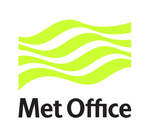
| Met Office Hadley Centre observations datasets |
| > Home > CRUTEM4 > Versions > |
Data set deprecation: CRUTEM4 has been superseded by CRUTEM5.
Further use of CRUTEM4 is not recommended for purposes other than comparison with newer data sets.
This page describes updates in CRUTEM4 version CRUTEM.4.6.0.0. Previous versions of CRUTEM4 can be found here. Data for CRUTEM.4.6.0.0 can be found here.
Principal additions to the CRUTEM archive (post-CRUTEM.4.5.0.0), within the period June 2016 to August 2017 are listed below:
Personal contacts in the Andean region and the downloading of Chilean data from http://www.cr2.cl/recursos-y-publicaciones/bases-de-datos/ have led to the acquisition of about 20 new series. In addition, many series have had gaps infilled.
Having been granted access to the 2001-2010 World Weather Records (WWR) data files (see https://www.ncdc.noaa.gov/wdcmet/data-access-search-viewer-tools/world-weather-records-wwr-clearinghouse), temperature series from more than 2300 stations were merged with the CRUTEM archive. The series received were not all confined to the period 2001-2010. Some predated 2010 and some had data beyond 2010. Care was taken to exclude series from regions where homogenized series of temperature are routinely available.
Climate series were received from the CARIWIG Project. The Project area involves the greater Caribbean. In all about 50 new series were added to CRUTEM. Many of these do not have sufficient coverage for the 1961-90 period for them to be involved in gridding operations.
Eleven long series for the Amazon region were supplied via a contact at the University of Sao Paulo. Some existing series were extended back in time.
The Icelandic Met Office makes climate data available - see http://en.vedur.is/climatology/data/. After downloading data and direct contact with personnel (ca. mid-September, 2016 - this is an ongoing project), 18 series (homogenized where available) were merged with the CRUTEM archive. Of these, eight series were new and additions were made to existing series. Some of the data have been made available through the personal efforts of Trausti Jónsson, senior meteorologist.
After the acquisition of a significant number of Indonesian series (see http://dataonline.bmkg.go.id/home), which came via an intermediary from Wageningen University, about 80 new series were added to the CRUTEM archive. In addition, a lot of infilling of missing values in existing series was achieved.
A number of Alaskan series were extracted from GHCNv4 files which were received via personal communication - and used in the 2015-16 updates for CRUTEM.4.5.0.0 (see release notes for CRUTEM.4.5.0.0). After processing, a 99-member subset of series was merged with CRUTEM. More than 50 of the series were new to CRUTEM.
After some checks revealed that a number of CRUTEM series had been 'dormant' for some years (due to their data not appearing in CLIMAT and/or MCDW circulations for a period of time) and this had prevented their updating when they reappeared in CLIMAT/MCDW some years later, a retrospective updating was achieved. The number of series involved was 290. However, this does not necessarily mean that the 290 series are being currently updated.
Through personal contact with personnel at IRI (International Research Institute for Climate and Society), 15 Ethiopian temperature series were received and merged with the CRUTEM archive. Two new (to CRUTEM) series were received and useful additions were gained to existing series.
After the acquisition of new data from DMI (Danish Meteorological Institute - see, for example, http://research.dmi.dk/publications/other-publications/reports/ ) for Greenland, Faroes and Denmark, 40 series were merged with the CRUTEM archive. 11 new series were received along with useful additions to existing series.
Contacts in CMA (Chinese Meteorological Administration) have recently supplied 420 homogenized station series through personal communication. After merger with the CRUTEM archive, it was found that there are 263 new series that are mostly long. Updates were included for the previously held 380-series homogenized subset - see Xu et al., 2013: Homogenization of Chinese daily surface air temperatures and analysis of trends in the extreme temperature indices. JOURNAL OF GEOPHYSICAL RESEARCH: ATMOSPHERES, VOL. 118, 9708-9720, doi:10.1002/jgrd.50791.
The acquisition of recent data has updated for the 338-strong homogenized temperature dataset from EC (Environment Canada - see http://www.ec.gc.ca/dccha-ahccd/default.asp?lang=En&n=B1F8423A-1) - this is a routine follow-up to the homogenized subset that has remained stable since its first use in 2012.
Updates have been received from BoM (Bureau of Meteorology) for 112 (mainland) and eight remote territories. The ACORN-SAT subset has remained stable (same stations) since its first appearance in 2012 - see http://datahub.io/dataset/acorn-sat.
The USHCN series have been updated using data downloaded from ftp://ftp.ncdc.noaa.gov/pub/data/ushcn/v2/monthly/. The network of 1218 stations has remained unchanged since 2013. The file downloaded was ushcn.tavg.latest.FLs.52j.tar (27/04/17).
The update for Taiwan series was undertaken using data made available at: http://www.cwb.gov.tw/V7e/climate/monthlyData/mD.htm. 29 series were updated and no new series were encountered. The last update was to the end of 2014.
After returning to the same website used in 2015 (http://opendata-download-metobs.smhi.se/explore/), the series downloaded in 2016 were updated.
The customary download of 518 monthly series from http://meteo.ru/english/climate/d_temp.php was successful but none of the series had been updated beyond September 2016. It is expected that some of these will update from CLIMAT/MCDW bulletins.
The ECA&D Project archives European climate data - see http://eca.knmi.nl/. A recent collaboration with colleagues at KNMI (Royal Netherlands Meteorological Institute) provided an extract of European temperature series from ECA&D which may be new to or more complete than existing CRUTEM holdings. Series from ECA&D have been merged with CRUTEM holdings.
The following diagnostic plots show comparisons of global and hemispheric time series for CRUTEM.4.6.0.0 (current version) and CRUTEM.4.5.0.0 (previous release).
AcknowledgementsFor this update of CRUTEM, the Climatic Research Unit was supported by the UK National Centre for Atmospheric Science (NCAS), a NERC collaborative centre, and by NERC through the SMURPHS project, grant NE/N006348/1. Commercial and media enquiriesYou can access the Met Office Customer Centre, any time of the day or night by phone, fax or e-mail. Trained staff will help you find the information or products that are right for you. |
 |
Maintained by: Colin Morice |
© Crown Copyright |